It was on last Tuesday. I received a group email from Dr. Paton Peter, a bird professor at URI asking if there was anybody interested to go for a day trip to the Great Gull Island, volunteer clearing vegetation for birds and enjoy free boating. As soon as the email popped up to my PC, I checked the date and luckily it was on Saturday. For a couple of months, we have been exploring different natural areas of Rhode Island and New England area, and we were just planning where to go on this weekend. After reading the email, I had no idea where he is taking students. The easiest way for me was the google map. After a quick research, I decided to go there because it is a small island in New York state and an important habitat for migratory birds. A point I was wondering with when I re-read the email. He had written that we are ‘clearing vegetations for birds’. It was never in my mind that clearing vegetation helps for birds. I always used to think of the way that having vegetation is always helpful for birds for many reasons: nest, food, protection, etc.
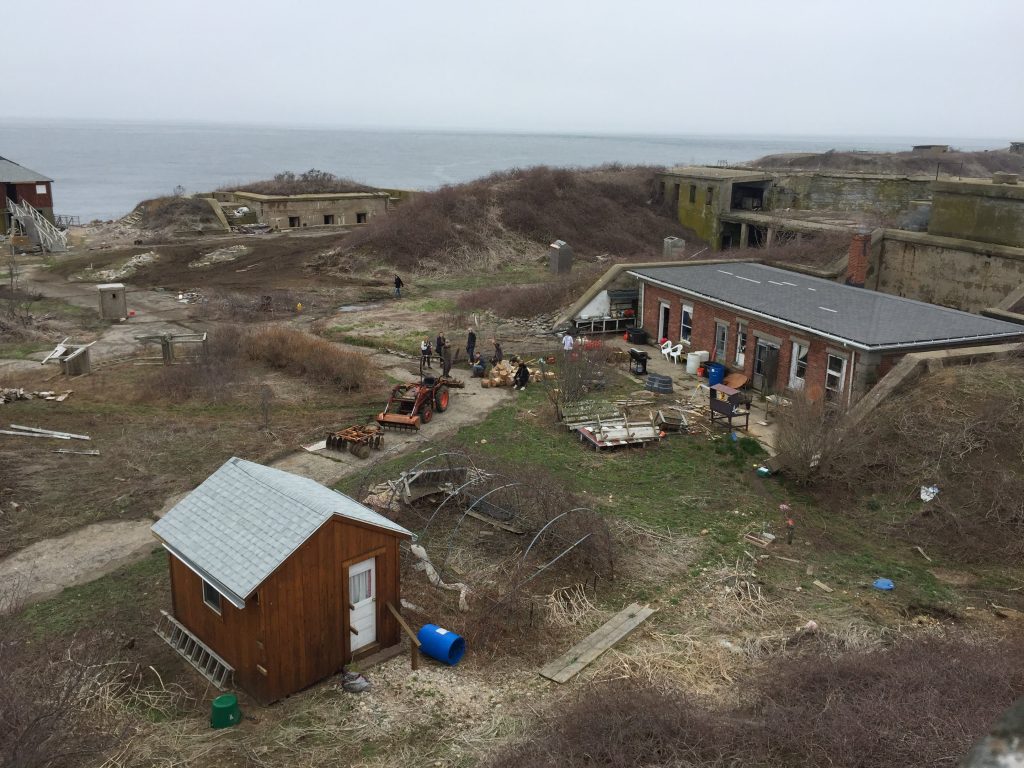
The place near the dock. It was our main meeting place in breaks and for lunch.
Great Gull Island History
Great Gull Island lies in Suffolk County, New York, and is roughly midway between Plum Island and Fishers Island. The history of the Great Gull Island goes back to the time before the first world war. In 1897, Fort Michie, US Army coastal defense site, was constructed on Great Gull Island to guard the entrance to Long Island Sound. The military base was operational from the Spanish–American War through World War II. It included one of the largest gun installations in the United States.
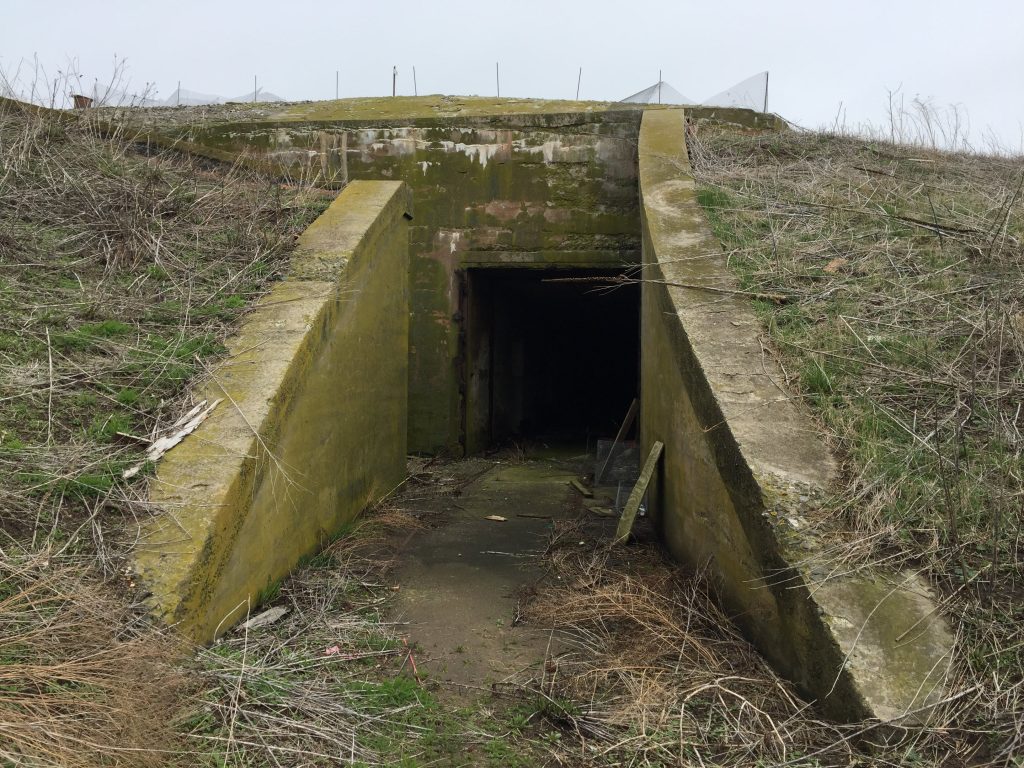
Military weapon storage at the fort.
Birds in the Island
The island is an important habitat for two migratory bird species: Common Terns and Roseate Terns. These birds migrate to South America to escape the chilled winter condition in the Northeast region of the USA and come back to the island area in summer for breeding. Therefore, the island is a summer house for these thousands of birds. During the war period, the habitat was destroyed, therefore to compensate the loss, US government promoted the island as an active conservation area. Since 1969, the island is managed by the American Museum of Natural History.

How did we get there?
We took a URI van and went to Noank in Connecticut and took a boat to the island. It took 40 minutes for both driving and boating. We really enjoyed boating. Many waves, ocean breeze and birds flying in the sky. Also, we enjoyed the time asking many questions to the professor ranging to a layman to hardcore science to the professor.
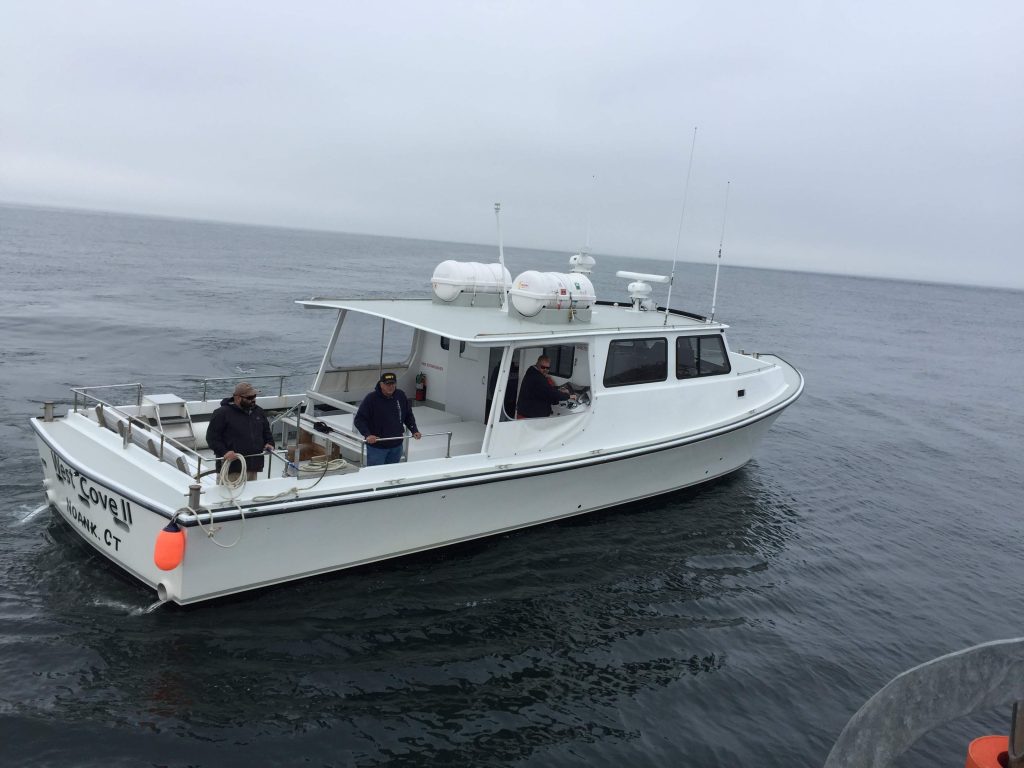
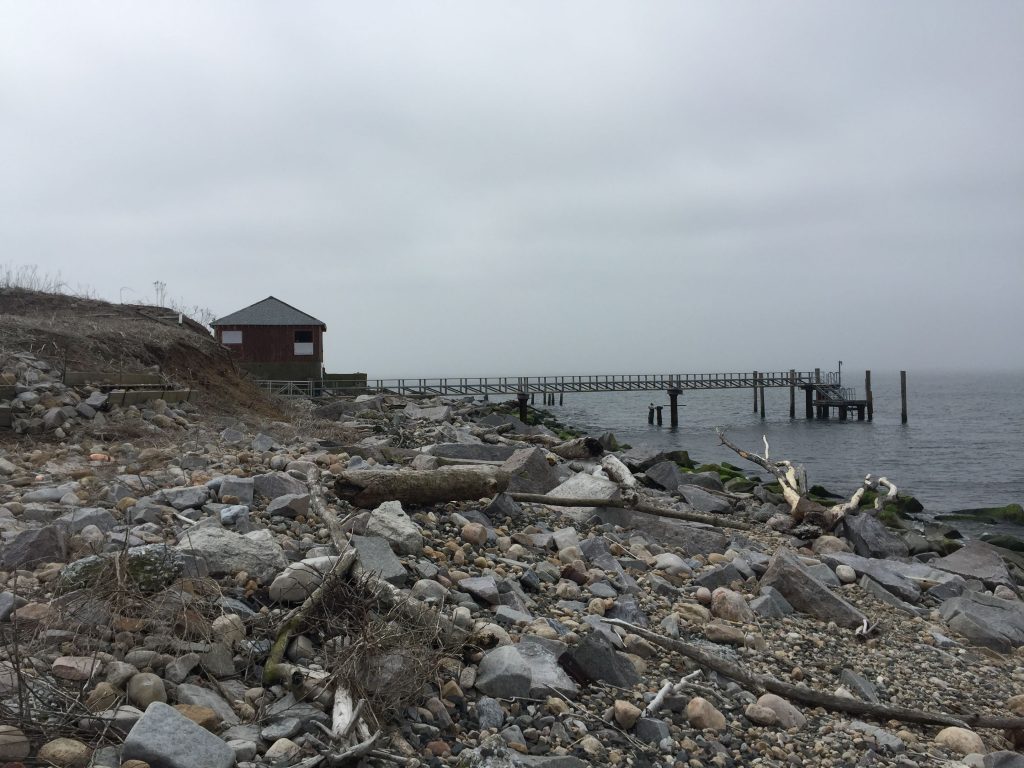
What we did there that day?
It was raining when we reached there. The weather forecast is more accurate here than in the country I belong to. Advanced science and flat topography make it effective. Therefore, we were asked to take a raincoat. The rain stopped after an hour we reached there. We were there to make the island more habitable for the birds who are making their way from Brazil and Argentina in early May. In the summer and fall season, there is lots of Phragmites plant, which is an invasive plant. We cleaned the vegetation because Gulls do not like to live in vegetations. They need clear land to lay eggs and grow their chicks. This was the reason we clear vegetation instead of having them which answered my question before reaching there. Also, we cleaned artificial nests for the Commons. I got an opportunity to handle a gasoline brush cutter for the first time. Though clearing vegetation was not a new task for me I used to do all those outdoor works manually. Be careful, it really shakes your hands, I had some ache in the evening. Moreover, the excursion tour around the island was really awesome. We saw ancient infrastructures used for the military wars and saw some fossils from the wartime.
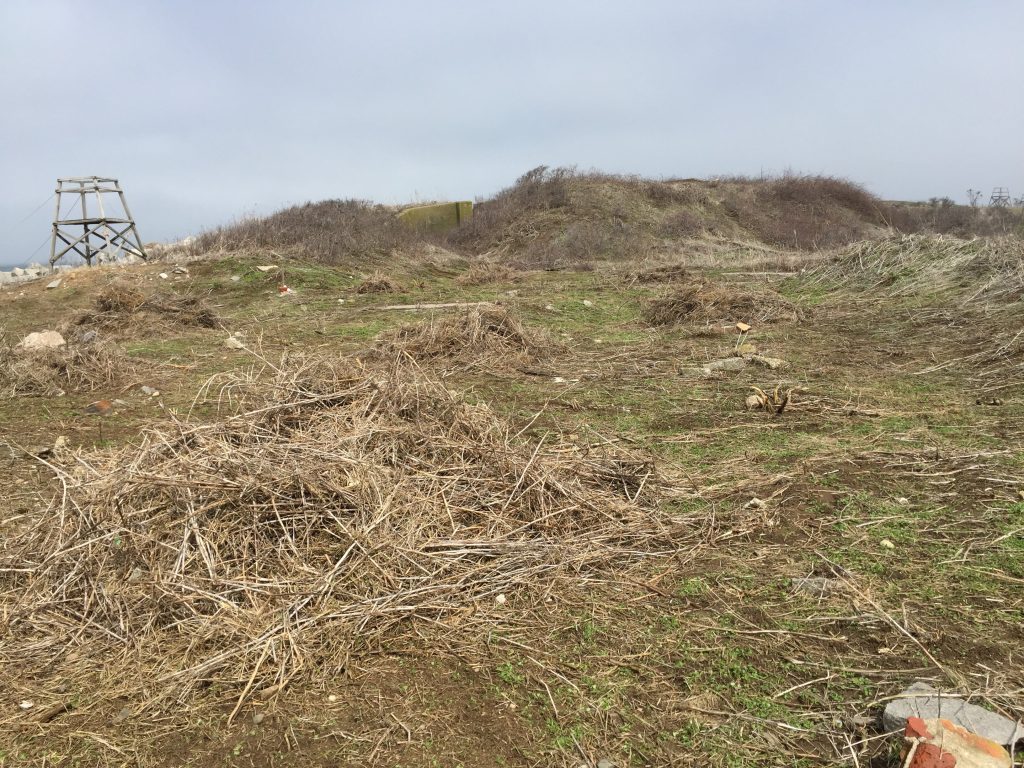
Piles of cleared vegetations 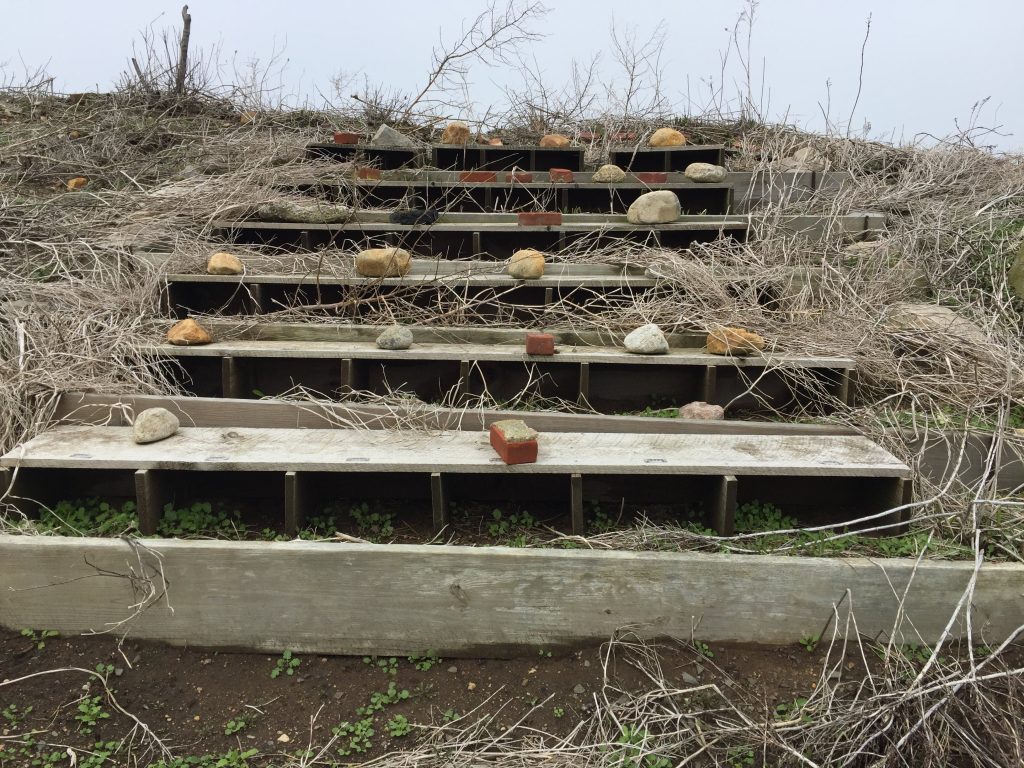
Bird’s artificial nests 
I’m clearing the grass. 
Another beautiful but artificial nest.
Final words
How the migratory birds find their way back to the same island? Do they have GPS system? The question I asked to the professor and he answered ‘Yes’. Birds use Earth’s magnetic field as sort of a heads-up display to help them navigate the world. We asked another question, why we are making artificial habitat for birds, since we believe that natural selection is the best? He replied that since we destroyed bird habitat during the war time, now we are compensating them. Now the answer made sense to me. Unfortunately we couldn’t see the turns in this trip , there were still in South America because of yet cold weather here. Now, we are crossing finger if we can go there in summer to see the birds and their eggs. The island is a cool place to watch harbor seals too. We saw many of them floating in water.




Great post! I was there years ago with the Museum of Natural History, it’s such an interesting place with all the ruins scattered throughout.
I’m commenting to say that if you ever hear of another volunteer trip, I would be glad to join! Brclinch@gmail.com